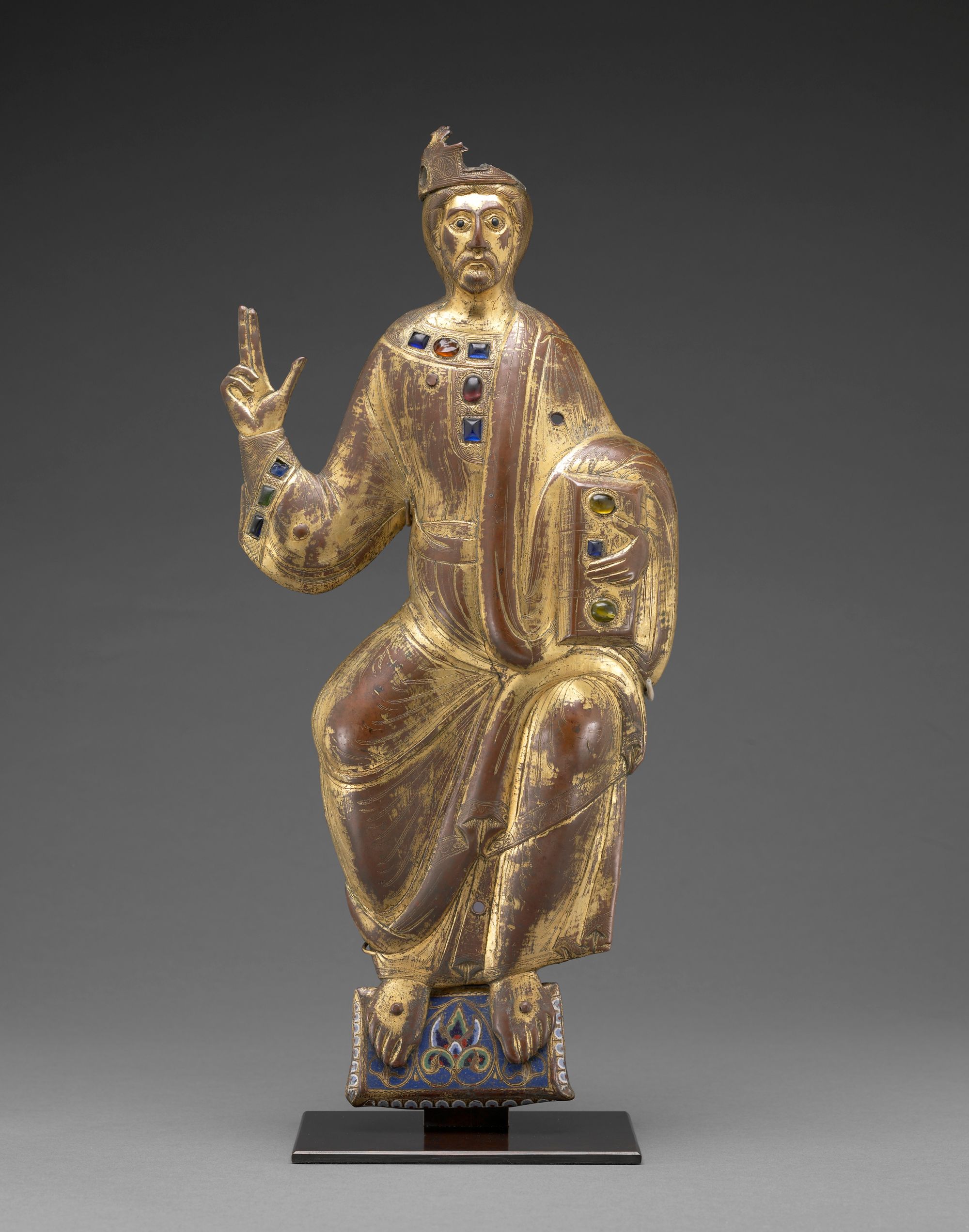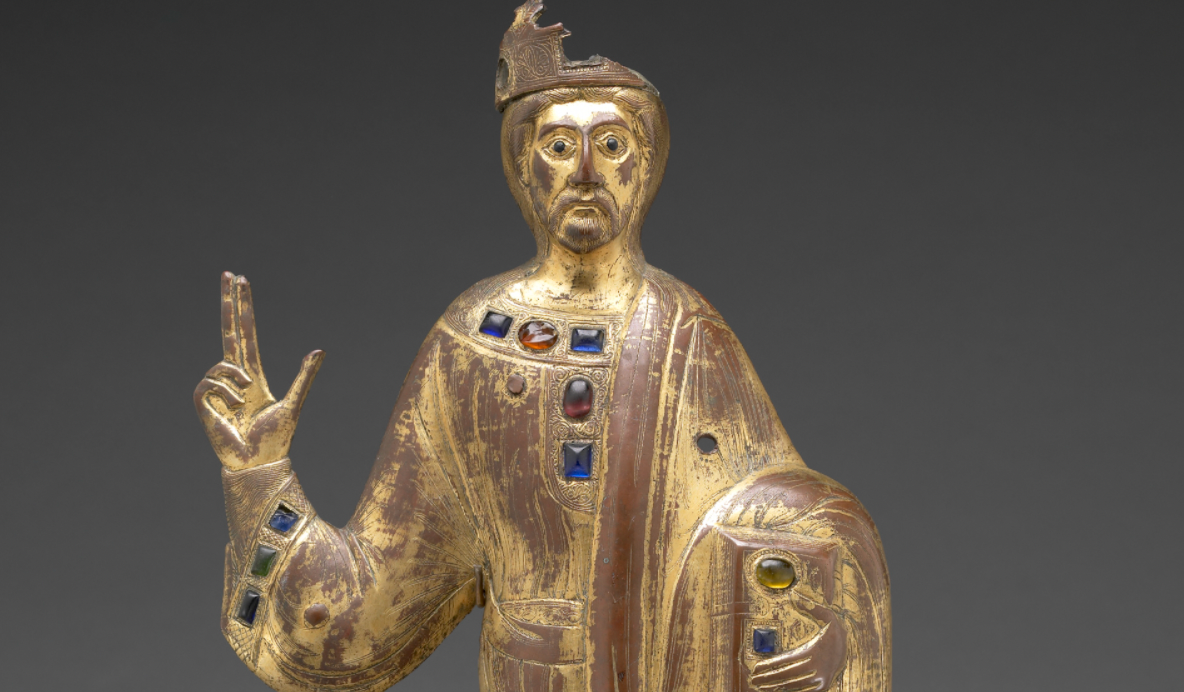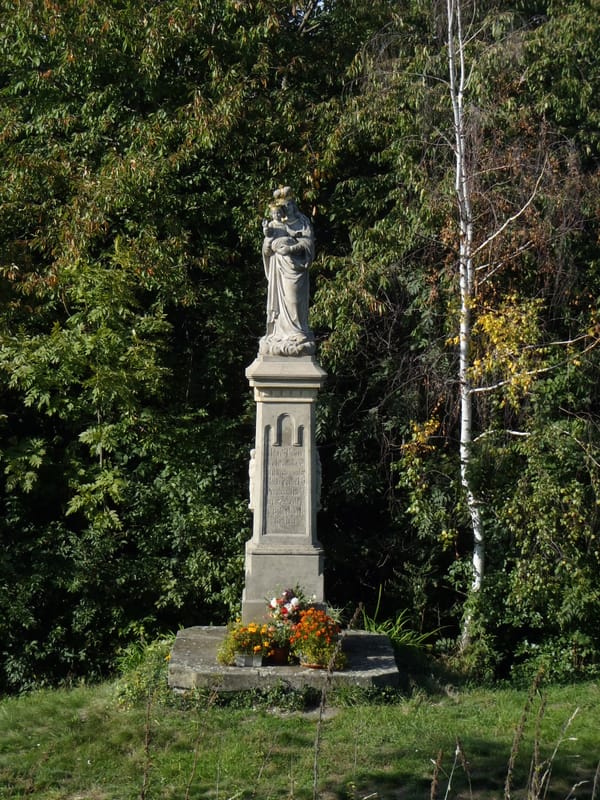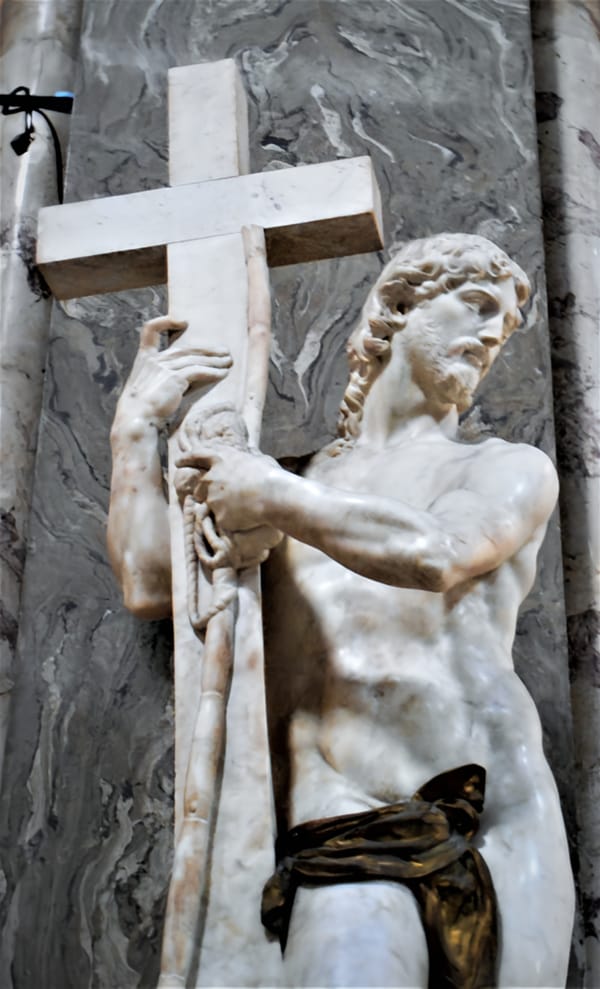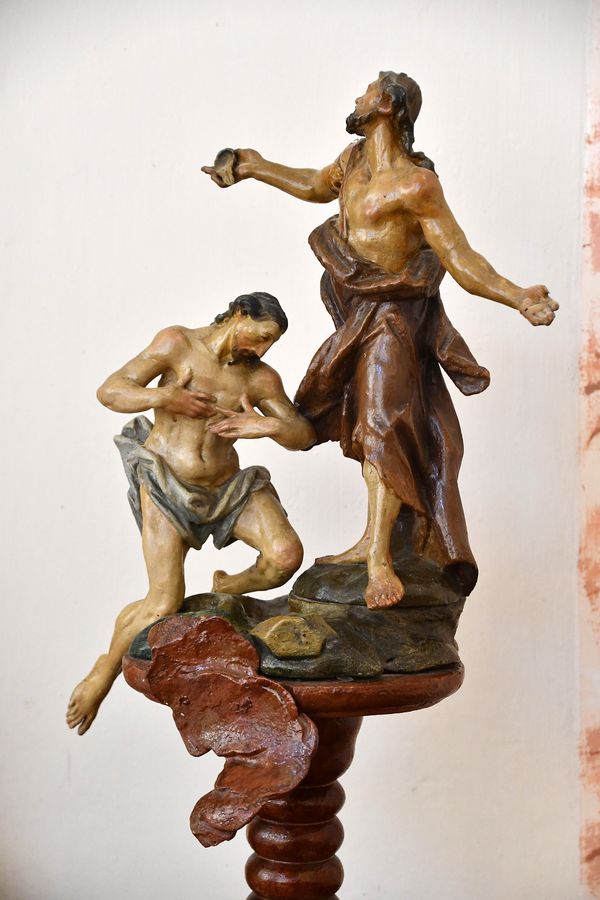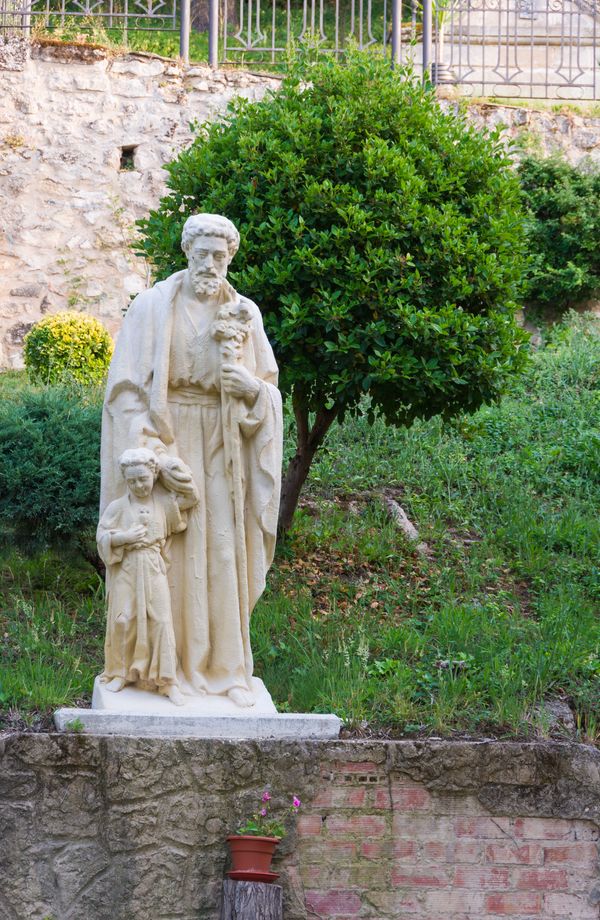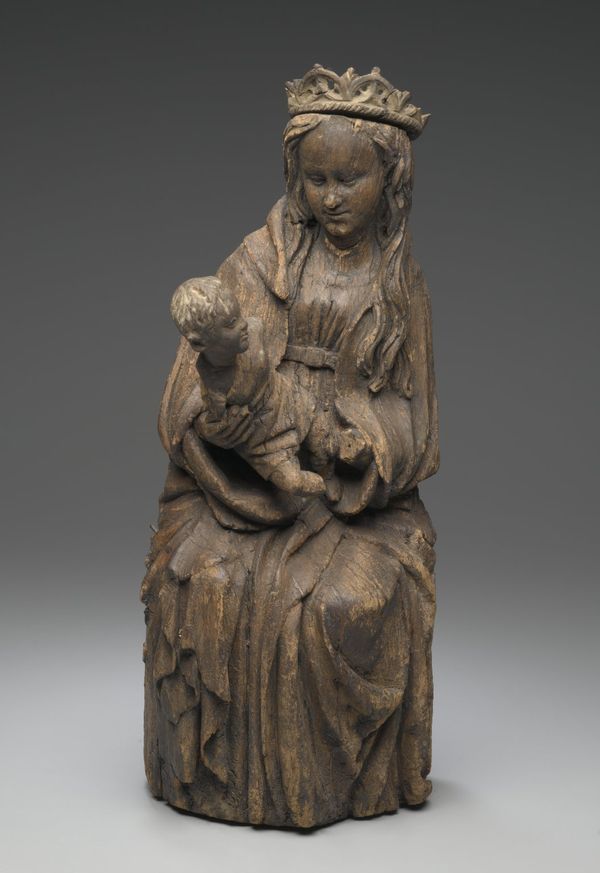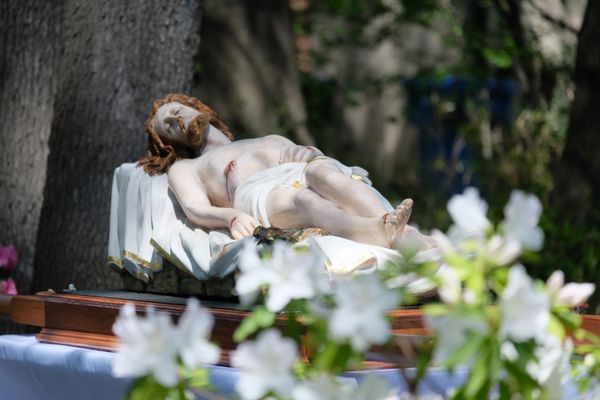The son of God is represented seated on heaven's throne, with his right hand raised, palm faced outward with three fingers extended. This gesture communicated a particular message to medieval Catholics in Western Europe. It is part of an iconographic pose called in Latin the "Maiestas Domini," or "Christ in Majesty," to symbolize his role in presiding over the human souls of all time. Images like this decorated altar frontals in Romanesque churches as a somber reminder of the coming Day of Judgment.
In this gilded copper representation, Christ holds a jeweled Bible and his feet rest on an ornate enamel plaque. This Christ in Majesty served as the centerpiece of an ensemble of 52 saint and apostle figures. Together they were commissioned for the high altar of a cathedral in Orense, Spain, a stop along a famous pilgrimage route. Artisans in Limoges, France, a renowned center for the production of enamel, created this plaque and its ensemble. Most of the surviving figures lack inset pieces of glass that decorate Christ's tunic, but have similar, bead-like eyes. Visually they all relate to one another, with highly ornamental enameled backgrounds, similar to the plaque at Christ's feet. Their patterns are also dark and light blue, with white, gold, green, and red-brown accents.
This figure was formed from a single sheet of copper hammered on the reverse side to create the raised design in front. Features such as the beard, mustache, and folds of the tunic are etched into its surface. Large areas of gilding have worn away, primarily on the raised surfaces, suggesting that this object was touched over many centuries by the faithful who prayed before it.
Free Downloads Below
Hi-Res
1200px
800px
